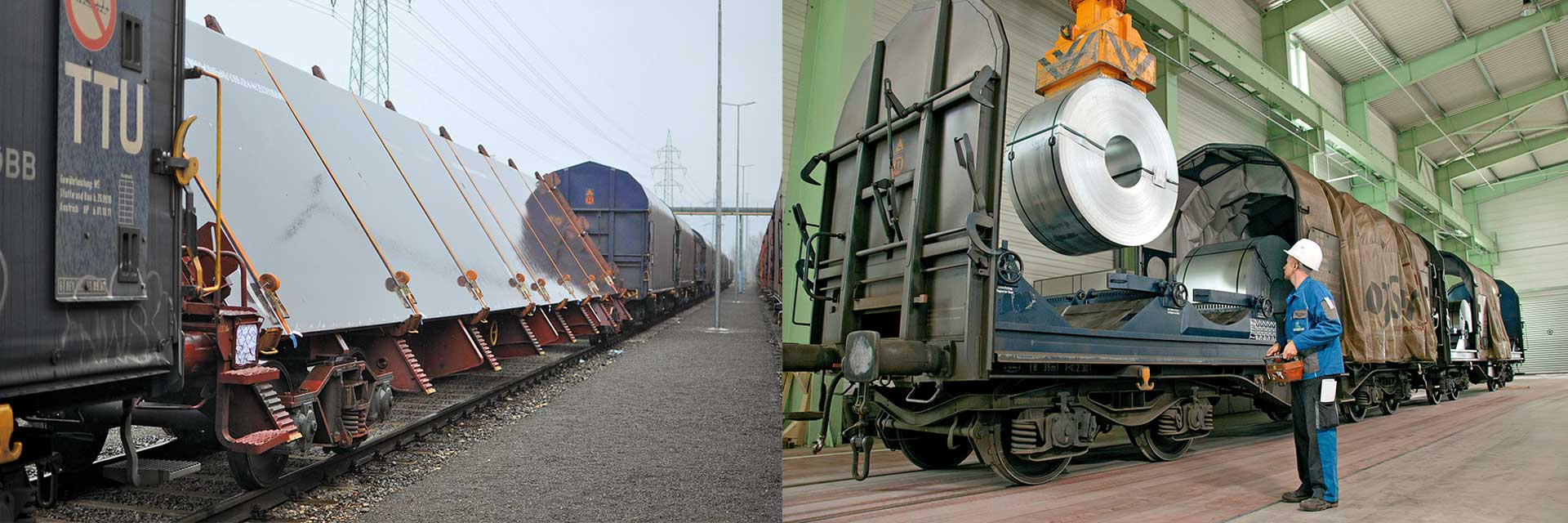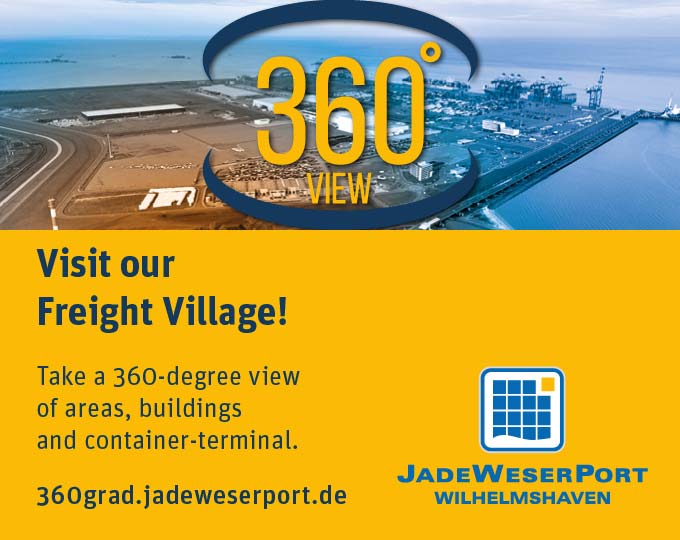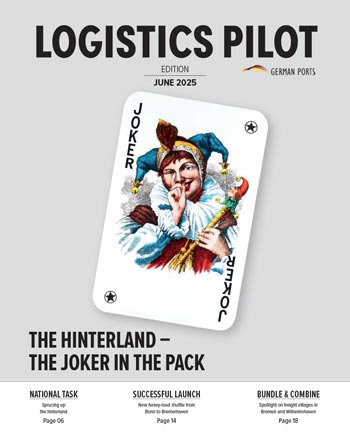Despite all the competition between Austrians and Germans, one thing is clear: one can’t do without the other in many areas. In the following, experts shed light on the economic and logistical interrelationships between the two countries – and present successful projects and construction sites.
Photos: iStock/paulbranding, Freepik/vectorpouch
Other Fotos: Deutsche Handelskammer in Österreich, Botschaft der Bundesrepublik Deutschland in Wien, TFG Transfracht, iStock-yenwen, Wirtschaftskammer Österreich (WKÖ), LogServ (2), ÖBB-Zenz, LogServ, TFG Transfracht, iStock/FooTToo
The relationship between Germany and Austria has never been so relaxed and so close as it is today. The two neighbouring countries not only have numerous similarities in terms of language and culture, but above all deeply intertwined political and economic relationships. This is reflected, among other things, in the bilateral trading volume, which amounted to over 100 billion Euros in 2019. “In 2019, Austria exported goods worth around 45 billion Euros to Germany. That is almost 30 percent of all exports, which makes Germany by far the most important customer country for Austria – far ahead of the USA and Italy,” states Thomas Gindele, Managing Director of the German Chamber of Commerce in Austria, classifying these figures. In the opposite direction, Germany exported goods worth 66 billion Euros to Austria in 2019. This makes our neighbour in the south the seventh most important destination country for goods from Germany.
Successes are interlinked
A similar picture emerges when a look is taken at cross-border investments. With 54.3 billion Euros, the Federal Republic of Germany is Austria’s most important investor within Europe. Conversely, however, 31.4 billion Euros of Austrian investments flow into Germany. “These are just two examples of many that show how closely the success of one country is linked to the success of the other,” states Gindele. In doing so, he is looking at the market segments for mechanical engineering products and automotive components in particular here: “Austria is a successful automotive supplier for a large number of well-known participants in the market, especially when it comes to safety and braking systems and airbags and luxury steering wheels. What is more, the largest engine plant from BMW in the world is located in Steyr.” For Ralf Beste, the German Ambassador in Vienna, one thing is certain: “Half of German cars would probably not be able to take roll off the production line without Austrian components.”
The two Austria experts also attribute growing importance to Austrian wood and metal processing and the plastics processing industry. “Numerous small and medium-sized companies have developed here over the past few years that do excellent work in their niches and deliver high-quality products,” states Gindele. With a view to the country’s important economic factors, Beste also points to Austria’s geographical importance in terms of transport: “Due to its central location in Central Europe, the Alpine Republic has an important function as a transit country. This applies to north-south as well as north-south-east and east-west relations.”

“Germany is by far the most important customer country for Austria.”
Thomas Gindele, General Manager of the German Chamber of Commerce in Austria
After roads, rail represents is the second most important transport artery for the Alpine republic. This mode of transport has been used to transport more than 100 million tonnes a year for ten years now.
The road as a main traffic artery
The most important traffic artery for Austrians is the road. According to Statistics Austria, the transport volume in Austria is around four times as high as by rail. In 2019 alone, more than 402 million tonnes of freight were transported over the country’s roads and passes, especially over the Brenner Pass. The importance of the concrete carriageways has been growing continuously since 2013 (at that time 325 million tonnes), which is reflected in the numbers that are increasing every year. The situation is somewhat different for the rail as a transport mode. Here the numbers have levelled off between 100 and 108 million tonnes per annum over the past ten years – in 2019, it was just under 102.5 million tonnes. In comparison, the share of inland shipping with a transport volume of 8.5 million tonnes in 2019 appears relatively low. But Beste clarifies this by stating, “That’s a lot of port for a landlocked country.” In view of this distribution across the modes of transport in general and the growing transit problem in particular, he advises thinking about how Austria can shift more traffic from road to rail. “Regardless of the resulting solution options, however, Austria already has a well-developed transport network and offers a high level of energy and logistics security,” adds Gindele.
Shift to rail
Alfred Wolfram, bremenports representative in Austria and chairman of the Association of Freight Forwarding and Logistics in the Austrian Federal Economic Chamber (WKÖ), is an advocate of relieving road congestion through intelligent rail solutions. However, he emphasises that these solutions cannot be created overnight and refers to the ÖBB Infrastruktur project “Zielnetz 2025+”. In it, the subsidiary of ÖBB-Holding that is not only responsible for operating and maintaining the Austrian rail network, but also for the planning, project planning and construction of the rail infrastructure, has set out its strategy for the long-term further development of the rail infrastructure in Austria. The priorities formulated in it include the expansion of the western line between Vienna and Salzburg, the southern line between Klagenfurt and Vienna as part of a Baltic-Adriatic rail corridor and the expansion of the Brenner line to strengthen cross-border rail traffic on the Scandinavian-Mediterranean corridor. “All of these are important part solutions, but they not represent a panacea for relieving road congestion,” states Wolfram, who sees his country primarily confronted by two traffic problems: “Firstly, nine out of ten trucks travelling on Austrian motorways have a foreign number plate and are mainly in transit which offers no added value to Austria. Alternatives by rail would certainly be helpful.” Secondly, two-thirds of domestic road transport takes place in a radius of less than 160 kilometres. “And these are precisely the routes on which trains are unprofitable and trucks are significantly cheaper,” states Wolfram: Making it important to think about possible solutions beyond rail transport here.

“Half of German cars probably could not roll off the production line without Austrian components.”
Ralf Beste, German Ambassador in Vienna
Inland shipping is an important economic factor for Austria. The Danube ports in Linz, Vienna, Enns and Krems are particularly important here.
Strong interest in the Danube ports
At this point, the ports of the Danube in Linz, Vienna, Enns and Krems could also come into play, through which a large part of the cargo is currently transferred by water. The four locations mentioned are important ports of call for bulk goods of all kinds primarily. What is more, large volumes of cars are shipped in Vienna and considerable amounts of wood in Enns. As the factory port of the steel-based technology and industrial goods group voestalpine, Linz is also an important hub for specialised steel transport operations for the automotive, household appliance and aviation industries.
Partners to the Austrian ports on the waterway also include the ports in Bremen and Lower Saxony. Together they handle around ten percent of the flow of goods to and from the Alpine republic. An increase in their market share does not seem realistic at the moment. On the contrary, in recent years, the northern ports have actually lost more volume to the southern ports than they have been able to generate. This is mainly due to the fact that many southern ports have expanded their capacities in the recent past and that the pre- and onward carriage to these destinations is often five to eight days shorter than to the northern ports,” Wolfram explains. In the course of this development, the importance of the Slovenian Adriatic port of Koper in particular has increased more and more in the recent past. However, reliable rail connections between the Austrian locations and Bremerhaven would also be particularly appreciated, especially for container transport operations. “They are perfectly timed and are often preferred to transportation by truck therefore,” states Wolfram.

“Nine out of ten trucks driving on Austrian motorways have a number plate from abroad.”
Alfred Wolfram, Chairman of the Freight Forwarding and Logistics Association in the Austrian Chamber of Commerce (WKÖ)

Loading heavy plates (l) and coils (r) is part of day-to-day business for LogServ, the logistics subsidiary of the steel division of the voestalpine Group.
Low water and capacity constraints
LogServ, the logistics subsidiary of the Steel Division of the voestalpine Group, operates from one of the most important Austrian ports, namely Linz. From there, the company transports its steel products around the globe and therefore moves around five million tonnes of steel and large steel sheets a year. “As a niche supplier of highly specialised steel products, the steel division supplies its key customers worldwide. The automotive industry is at the forefront here, but global players in mechanical engineering and the energy sector also rely on our adherence to deadlines,” states Christian Janecek, Managing Director of LogServ. The finished steel products are transported using all modes of transport. The most important of these for LogServ is rail, followed by truck and inland waterways.
The choice of transport mode not only depends on the costs and transportation time, but also the dimensions of the products. For example, steel coils are transported by rail and truck, since proven transport standards are available including coil troughs in the wagons and equivalent trailers on trucks. On the other hand, however, particularly large, heavy and bulky special formats, such as heavy plates and boiler bottoms, can be transported most easily and cost-effectively by barge. “If that is not logistically possible, we can also process these transport operations by rail or truck. The great challenge is then to find wagons and trailers with the required specifications,” states Janecek.
In addition to the three parameters mentioned above, other aspects exist for the LogServ managing director that can affect logistics from inland Austria: “In the case of inland waterways, for example, persistent low water levels mean that less cargo can be taken on board. We last had this as a massive problem in 2018. At the moment, we are struggling with fluctuating water levels from week to week.” He also sees problem areas of a different kind in rail and truck as modes of transport. “In the course of the corona pandemic, railway processes have not yet fully started up again everywhere. This creates gaps that lead to limited wagon availability.” From Janecek’s point of view, the current situation on the road is anything but relaxed. Here, numerous transporter companies had reduced their resources to such an extent due to corona that LogServ was not always able to call up the capacities it required in the market for shipping voestalpine’s steel products to its international customers.

“The greatest challenge is to find wagons and trailers with the required specifications.”
Christian Janecek, Managing Director LogServ
Various modes of transport are involved in CT, whereby trucks are often only used on the shortest part of the route.
Low water and capacity constraints
LogServ, the logistics subsidiary of the Steel Division of the voestalpine Group, operates from one of the most important Austrian ports, namely Linz. From there, the company transports its steel products around the globe and therefore moves around five million tonnes of steel and large steel sheets a year. “As a niche supplier of highly specialised steel products, the steel division supplies its key customers worldwide. The automotive industry is at the forefront here, but global players in mechanical engineering and the energy sector also rely on our adherence to deadlines,” states Christian Janecek, Managing Director of LogServ. The finished steel products are transported using all modes of transport. The most important of these for LogServ is rail, followed by truck and inland waterways.
The choice of transport mode not only depends on the costs and transportation time, but also the dimensions of the products. For example, steel coils are transported by rail and truck, since proven transport standards are available including coil troughs in the wagons and equivalent trailers on trucks. On the other hand, however, particularly large, heavy and bulky special formats, such as heavy plates and boiler bottoms, can be transported most easily and cost-effectively by barge. “If that is not logistically possible, we can also process these transport operations by rail or truck. The great challenge is then to find wagons and trailers with the required specifications,” states Janecek.
In addition to the three parameters mentioned above, other aspects exist for the LogServ managing director that can affect logistics from inland Austria: “In the case of inland waterways, for example, persistent low water levels mean that less cargo can be taken on board. We last had this as a massive problem in 2018. At the moment, we are struggling with fluctuating water levels from week to week.” He also sees problem areas of a different kind in rail and truck as modes of transport. “In the course of the corona pandemic, railway processes have not yet fully started up again everywhere. This creates gaps that lead to limited wagon availability.” From Janecek’s point of view, the current situation on the road is anything but relaxed. Here, numerous transporter companies had reduced their resources to such an extent due to corona that LogServ was not always able to call up the capacities it required in the market for shipping voestalpine’s steel products to its international customers.
Logistics Pilot
The current print edition - request it now free of charge.
Popular travel destination: According to Statista, around 6.1 million people from Germany travelled to Austria on holiday in 2020.
One solution option – combined transport
Another logistics specialist in trading with Austria is the DB Cargo subsidiary TFG Transfracht, which, according to its own statements, disposes of the densest rail network in the seaport hinterland in Europe. As part of its AlbatrosExpress network, it connects the six ports in Bremerhaven, Wilhelmshaven, Hamburg, Koper, Rotterdam and Antwerp with the most important economic centers in Germany, Austria and Switzerland. “The region of Austria contributes around a tenth of the total volume to our entire AlbatrosExpress network. We are particularly interesting for the forwarding companies, shipping companies and shippers there because we can offer almost all transhipment terminals in the ports mentioned from one single source,” states Frank Erschkat, management spokesperson from TFG Transfracht.
From his point of view, Austria is mainly a freight forwarder market “where the concentration on carriers has not yet progressed to the same extent as in other country markets”. He also attests to the Alpine republic having a wide range of logistical options – both by rail and water. “Due to its geographical location, Austria can call at a large number of shipping ports. The possibilities range from the German seaports, to the Greek, Slovenian and Italian and the seaports in the west,” states Schkat. “In general, the German seaports are the main points of contact for the shipping industry in Austria when it comes to overseas transport operations. The decisive factors here are the closely timed frequencies in combined transport, but also the good port infrastructure and rail connections in Germany,” adds Erschkat.
The TFG Transfracht boss also sees combined transport as a growth engine for rail freight transport and a driving force for climate-friendly transport – not only as far as hinterland transport to Austria is concerned. “Experts estimate that the market share of CT in the rail freight transport market will increase in the direction of 35 percent by 2030. From our point of view, CT is already extremely important strategically. Only those who optimally combine the strengths of the rail and road as modes of transport and integrate CT into their logistics will be best positioned for more sustainability,” states Erschkat, pointing out a possible solution for relieving the burden on road transport and achieving international climate protection goals.
More than just a holiday destination
According to Wolfram, one thing above all particular can be read from the economic interdependencies and assessments taken from practice described above: “Austria is not only an attractive holiday destination, but also a reliable partner for industry and business – even beyond Germany’s borders.” It is not for nothing that numerous Austrians find themselves in management positions at well-known German companies today. Gindele sees the country’s education system as a success factor for Austria’s performance that should not be underestimated: “In the past few years, Austria has responded flexibly and quickly to new demands in the economy, in particular to new technical developments or the trend towards digitalisation. And with a wry look in his eye, Beste has identified another small but subtle difference that could possibly give the Alpine republic an additional advantage in the market in future – and not only in the logistics and transport sector: “Germans love rules, but Austrians have a better eye for finding ways out. Both have a lot to offer.” (bre)

“Many stakeholders in the market see CT as a growth engine for the railways and a driving force for climate-friendly transport.”
Frankeschkat, management spokesman at TFG Transfracht
The Linz Diploma: Documented independence
The Linz Diploma is one of the most important documents in the history of Bremen. It was signed on June 1, 1646 by Ferdinand III, the then German-Roman Emperor and Archduke of Austria. By signing it, he confirmed the imperial immediacy of the city of Bremen during the Thirty Years’ War (1618-1648). This free Bremen from the pressure of a direct sovereign in its striving for independence and made the city not subject to any other rule than that of the emperor. This afforded the city a great deal of freedom of movement, which benefited the development of trade and shipping in particular. At the time, Bremen’s councillors are said to have paid around 100,000 guilders in return for Ferdinand III’s signature – not included in this sum were the unofficial incidental costs and bribes, which varied greatly in amount depending on the source.
The Linz Diploma has been kept in the Bremen State Archives since 1998, having been considered lost for almost half a century. During the Second World War, the deed of independence was moved to Bernburg an der Saale to protect it from bombing raids. From there, occupying Soviet soldiers probably took it to Leningrad in 1946, where it was lost track of. Until 1998, when it was found that it had been transported to the Library of Academy of Sciences in Yerevan, Armenia, during the war. After that, things progressed quickly through diplomatic channels. In May 1998 the Armenian Foreign Minister Wartan Oskajan presented the Linz Diploma together with more than 500 other documents from Bremen, Hamburg and Lübeck to the German Foreign Minister Klaus Kinkel. And he had it returned to Bremen quickly. (bre)







